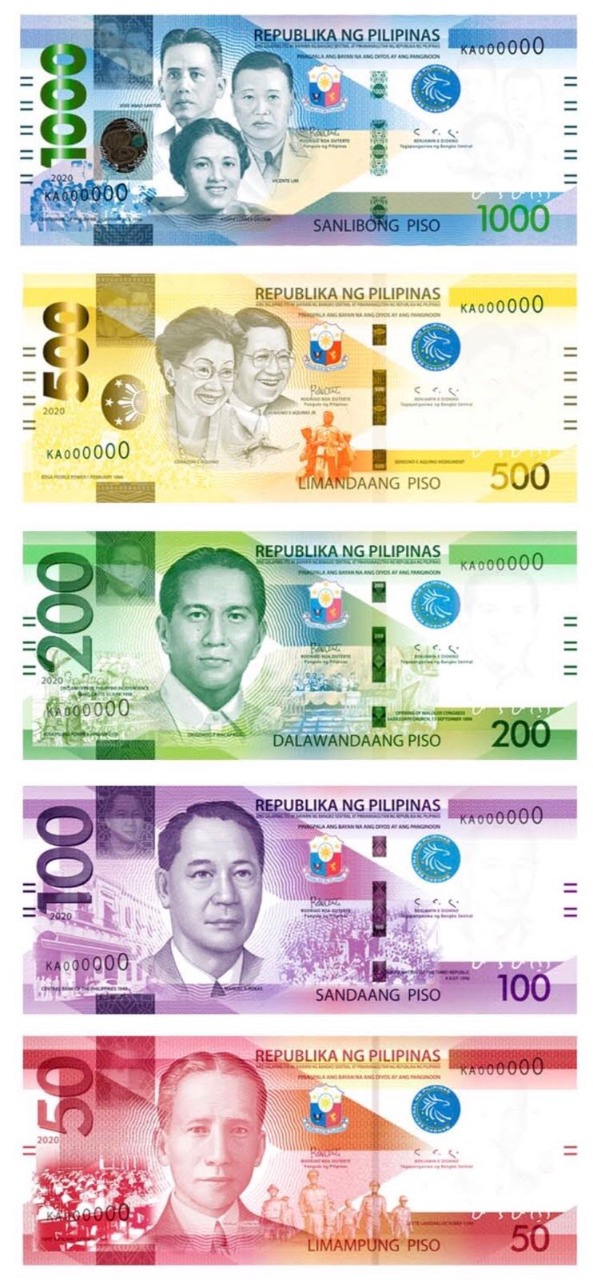MANILA, Philippines — The central bank on Wednesday launched “enhanced” Philippine banknotes that it said we’re “more responsive to the needs of the elderly and the visually impaired”, and feature the latest anti-counterfeiting technology.
In an online press briefing, Bangko Sentral ng Pilipinas (BSP) Governor Benjamin Diokno said the regulator “took an opportunity to further improve our banknotes as part of global best practices and, at the same time, improve on its design and security features” to promote inclusivity and integrity in the currency.
“While digital payments are on the rise, there are still some sectors in our society that use cash to purchase goods and pay for services,” he said. “And it is equally our priority to ensure that banknotes and coins are accessible, recognizable, and easily authenticated.”
The central bank said currency experts worldwide recommend improvements in security features and other enhancements every 10 years. The country’s New Generation Currency banknote series now in circulation was first issued in December 2010.
To further refine the current series’ design, BSP added short horizontal lines that may be touched and felt at the right side of the banknotes. There will be one pair of these lines for the 50-Piso, two pairs for the 100-Piso, three for the 200-Piso, four for the 500-Piso, and five for the 1000-Piso.
This is meant to assist the elderly and the visually impaired identify banknotes and distinguish one denomination from another.
The security features of the 500-Piso and 1000-Piso were strengthened by adding a roller bar effect on the value panels and color-shifting in the optically variable ink.
These features will make the higher denominations more difficult to counterfeit, the central bank said.
The improvements also highlight the country’s culture by featuring indigenous Filipino weaves on the windowed security thread of the 100-Piso, 200-Piso, 500-Piso, and 1000-Piso banknotes.
The 1000-Piso adopted the T’nalak weave design with the movement of design patterns, color, and micro-optic features. On the other hand, the 500-Piso took its weave design from the southern Philippines. When viewed at a different angle, the color of the thread shifts from gold to jade, and vice versa.
Following an indigenous textile design from the Visayas region, the security thread of the 200-Piso banknote changes colors from green to blue.
Lastly, the 100-Piso was designed after an indigenous textile from the Bicol region and with colors that shift from violet to bronze.
“Through this distinguishing feature, the elderly and the visually impaired will be more confident in using the banknotes for their transactions, paving the way for financial inclusion,” Diokno said.
The existing banknotes without the new features will remain legal tender and shall co-exist with the enhanced banknotes.


